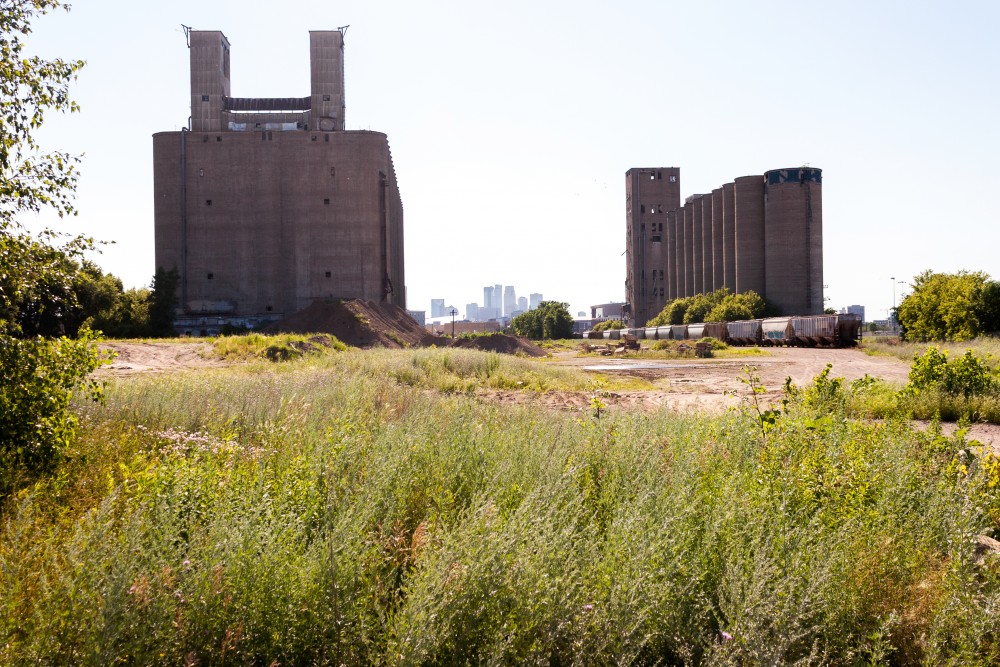A sizable portion of industrial land on the north side of Prospect Park is rife with obstacles to development amidst the patchwork of ownership in the sparse, overgrown region.
The area north of University Avenue has been called the “wild frontier” of the neighborhood, littered with old industrial structures and lacking in basic infrastructure, like roads. With the success of Surly’s Destination Brewery and recently-announced developments to the region, the area is garnering a resurgence of attention.
Visions for the section of neighborhood, originally deemed the Southeast Minneapolis Industrial Area in the 1980s, have been created and altered for decades. With collaboration from a wide range of groups, including Prospect Park Association members and the University of Minnesota Foundation Real Estate Advisors (UMFREA), property owners are urged to be a part of that vision.
“If you care about the neighborhood as a whole, you actually get more value out of your own piece [of property],” said Vince Netz, president of PPA. “Everybody is doing something better than what you would’ve done on your own.”
Area ownership is thinly spread between the University and UMFREA, Prospect Park Properties, Hubbard Broadcasting, Wall Companies and two different railroad companies. This spotty ownership and lack of existing infrastructure has made collaboration and development difficult, Netz said. Developers want properties to be “shovel-ready.”
The neighborhood organization hopes new developments in the region will bring variety of housing, research and small entrepreneurial spaces. The goal is to bring industrial jobs for the 21st century into the area, said John Kari, co-chair of the PPA Planning and Land Use Committee. The original plan for Wall Companies’ Malcolm Yards project was a University-related research park, although future plans have yet to be decided.
“It was pretty hard for [developers] to see what it could be when it’s just an empty piece of industrial land with no roads at all,” Netz said.
One of the neighborhood’s concerns is that the vision will get lost in the details of complicated partnerships, causing developers to revert back to standard apartment buildings with ground-level retail spaces.
“What we’re afraid of, of course, is as it gets complicated, then the default is going to be to six-story buildings made of stick,” Netz said.
The location has been a major draw for developers due to its proximity to the University of Minnesota, public transportation, Interstate 94 and the established distinct residential neighborhood.
The City has not provided the neighborhood adequate support as it navigates new development and infrastructure for the region, Netz said.
“When you are talking about something very sparkly and new, it’s very hard for [the City] to put that in their regulatory machine. They don’t know how it fits,” Netz said.
But Heather Worthington, director of long-range planning for the City, said they have been working closely with Prospect Park and the other groups involved.
Although there are some challenges regarding multiple layers of infrastructure and ownership for the redevelopment, these challenges are not unique to the north side of Prospect Park, she said.
“The neighborhood has been very clear about their desire to see something happen there and we support that vision, generally,” Worthington said. “But I think there’s a lot of moving parts to make that happen.”














